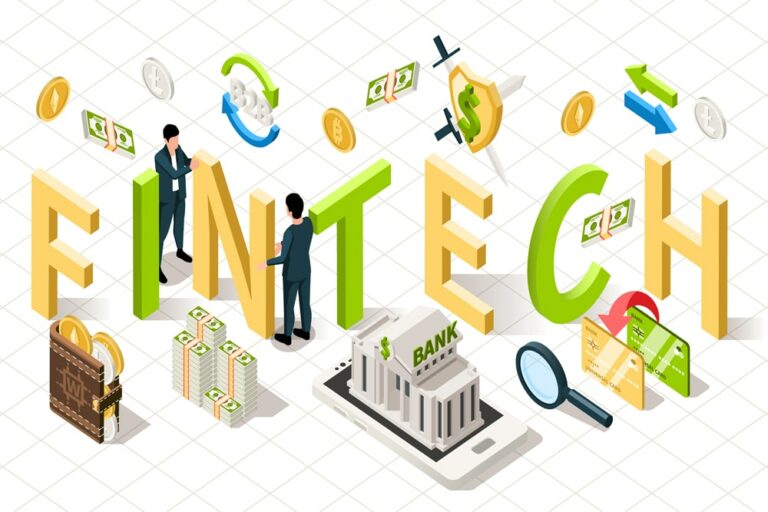In the rapidly evolving landscape of financial technology, the digital revolution has opened up exciting opportunities for innovation and convenience. FinTech companies have empowered us to manage our finances seamlessly with just a few taps on a smartphone. But with this convenience comes a pressing concern: the security of our digital financial assets. As we entrust our money and sensitive information to digital platforms, the need for robust cybersecurity in FinTech has never been more critical.
The rise of FinTech has ushered in a new era of finance, characterized by mobile banking, digital payments, and robo-advisors. Yet, it has also attracted the attention of cybercriminals looking to exploit vulnerabilities in these digital ecosystems. The threat landscape is constantly evolving, with attackers becoming increasingly sophisticated in their techniques. As a result, protecting digital financial assets is not merely an option; it’s an imperative.
In this insightful article, we delve deep into the world of cybersecurity within the FinTech sector. We explore the challenges and risks faced by FinTech companies and their users, shedding light on the latest cyber threats that loom on the horizon. From data breaches to ransomware attacks, we’ll uncover the various ways in which cybercriminals seek to compromise financial security. But we won’t stop at highlighting the risks; we’ll also equip you with essential knowledge about best practices, advanced technologies, and regulatory compliance. With these insights, you’ll gain a comprehensive understanding of how the FinTech industry is fortifying its defenses and working tirelessly to protect your digital financial assets. So, let’s embark on this journey through the realm of cybersecurity in FinTech, where innovation and security go hand in hand to shape the future of finance.
In the ever-evolving realm of FinTech, where convenience meets innovation, a darker side lurks just beyond the horizon: the burgeoning threat landscape. As digital financial assets become increasingly integral to our lives, cybercriminals are honing their skills, adapting to new technologies, and targeting FinTech platforms with relentless determination. This growing threat landscape is characterized by a wide array of cyber risks, each capable of wreaking havoc on both financial institutions and individuals.
Data Breaches: Among the most prevalent threats, data breaches involve unauthorized access to sensitive information. For FinTech companies, this could mean the compromise of customer data, including personal details and financial records. These breaches can lead to identity theft, financial fraud, and reputational damage for both the company and its users.
Ransomware Attacks: Ransomware has emerged as a powerful weapon in the cybercriminal arsenal. These attacks involve the encryption of an organization’s data, with cybercriminals demanding a ransom for its release. FinTech companies are attractive targets due to the high stakes involved and the critical nature of the data they hold.
Phishing and Social Engineering: Cybercriminals often employ deceptive tactics to trick individuals into revealing sensitive information or performing actions that compromise security. Phishing emails, for example, impersonate legitimate entities to lure users into clicking on malicious links or sharing login credentials.
Payment Fraud: With the rise of digital payments and mobile wallets, payment fraud has become a significant concern. This includes unauthorized transactions, fraudulent chargebacks, and account takeovers, all of which can result in financial losses for users and providers.
Third-Party Risks: FinTech companies frequently collaborate with third-party vendors and partners, expanding the attack surface. Cybercriminals may target these intermediaries to gain access to sensitive data or exploit vulnerabilities in interconnected systems.
Regulatory Challenges: As the FinTech industry grows, regulatory bodies are working to establish frameworks for cybersecurity and data protection. Compliance with these regulations can be challenging, and non-compliance can result in significant fines.
Advanced Persistent Threats (APTs): APTs are sophisticated, long-term cyberattacks aimed at infiltrating specific targets, often for espionage or financial gain. These attacks are difficult to detect and can persist over extended periods.
The growing threat landscape necessitates constant vigilance and investment in cybersecurity measures. As technology evolves, so do the tactics of cybercriminals. In response, the FinTech industry is embracing innovative security solutions, such as artificial intelligence and blockchain, to fortify defenses. By understanding the breadth of the threat landscape, both FinTech companies and users can better protect digital financial assets and ensure a safer financial future.
In the dynamic and high-stakes world of FinTech, safeguarding digital financial assets is paramount. To protect against the evolving threat landscape, FinTech companies and users alike must adopt key cybersecurity practices that fortify defenses and ensure the integrity of financial transactions. Here are some essential measures:
Multi-Factor Authentication (MFA): Implementing MFA is an effective way to enhance security. This practice requires users to provide two or more authentication factors (e.g., password, biometric data, or a one-time code) before granting access. MFA adds an extra layer of protection against unauthorized access, even if login credentials are compromised.
End-to-End Encryption: Data security is non-negotiable in FinTech. Employing end-to-end encryption ensures that sensitive information, such as financial transactions and personal data, remains secure during transit. This means that even if cybercriminals intercept data, it’s virtually impossible to decipher without the encryption key.
Regular Software Updates and Patch Management: FinTech companies should keep their software, operating systems, and applications up to date. Updates often include security patches that address known vulnerabilities. Failure to apply these patches promptly can leave systems exposed to exploitation.
User Education and Training: Human error remains one of the weakest links in cybersecurity. FinTech companies should invest in user education and training programs to help individuals recognize phishing attempts, social engineering tactics, and other fraudulent activities. Educated users are less likely to fall victim to cyberattacks.
Continuous Monitoring and Threat Detection: Utilizing advanced threat detection tools and systems enables proactive identification of suspicious activities. Anomalies in user behavior, network traffic, or application performance can trigger alerts, allowing security teams to investigate and respond swiftly to potential threats.
Incident Response Plan: Preparing for cyber incidents is as crucial as preventing them. FinTech companies should develop and regularly test incident response plans to minimize the impact of security breaches. Having a well-defined strategy can help mitigate damage and facilitate recovery.
Blockchain Technology: Leveraging blockchain can enhance security in FinTech by providing transparent, tamper-resistant ledgers for financial transactions. Blockchain’s decentralized nature reduces the risk of a single point of failure and ensures the integrity of records.
Collaboration with Regulatory Bodies: FinTech firms must stay abreast of cybersecurity regulations and compliance requirements. Collaborating with regulatory bodies helps ensure that security practices align with industry standards and legal mandates.
Security Audits and Penetration Testing: Regular security audits and penetration testing by third-party experts can help identify vulnerabilities and weaknesses in systems. These assessments enable proactive fixes before cybercriminals can exploit them.
Cloud Security: If leveraging cloud services, FinTech companies must prioritize cloud security. This includes robust access controls, data encryption, and adherence to cloud provider security best practices.
Zero Trust Architecture: Adopting a Zero Trust approach means never automatically trusting any user or system, inside or outside the network perimeter. All access requests are authenticated and authorized, limiting potential threats.
Data Backups and Disaster Recovery: Regularly backing up financial data and having a comprehensive disaster recovery plan in place ensures business continuity in the event of data breaches or system failures.
By implementing these cybersecurity practices, FinTech companies can significantly reduce the risk of cyberattacks and protect the digital financial assets of both their organizations and their users. In an increasingly digital financial landscape, security is the cornerstone of trust and success.
The FinTech sector, which operates at the intersection of finance and technology, faces unique cybersecurity challenges. To counter evolving threats, it leverages advanced technologies to fortify its security posture. Here are some cutting-edge technologies employed in FinTech security:
Artificial Intelligence (AI) and Machine Learning (ML): AI and ML play pivotal roles in identifying patterns and anomalies within vast datasets. In FinTech, they are used for fraud detection, risk assessment, and behavioral analysis. These technologies continuously learn and adapt, making them adept at spotting suspicious activities and mitigating threats in real-time.
Biometric Authentication: Traditional authentication methods, like passwords, can be vulnerable to theft or phishing. FinTech firms increasingly adopt biometric authentication, such as fingerprint scans, facial recognition, or voice recognition, to ensure user identity and enhance security. Biometrics are difficult to replicate, significantly reducing the risk of unauthorized access.
Blockchain Technology: Blockchain’s distributed ledger technology is renowned for its immutability and transparency. In FinTech, blockchain is used to secure financial transactions and smart contracts. It ensures that all parties involved can verify the integrity of a transaction, reducing the risk of fraud and ensuring data integrity.
Quantum-Safe Cryptography: As quantum computing advancements loom, conventional cryptographic methods may become obsolete. FinTech firms are exploring quantum-resistant encryption algorithms to safeguard sensitive financial data in a post-quantum computing era.
Zero Knowledge Proofs: Zero-knowledge proofs enable secure transactions without revealing sensitive information. In financial transactions, this means proving ownership or compliance without disclosing the underlying data. It’s particularly useful in privacy-focused FinTech applications.
Big Data Analytics: FinTech companies leverage big data analytics to identify trends, detect anomalies, and assess risk. By analyzing vast datasets, they can uncover subtle patterns indicative of fraudulent activities, enabling faster response times and improved security.
Cyber Threat Intelligence: Advanced threat intelligence platforms monitor the dark web and other sources to gather information on potential threats. FinTech companies use this intelligence to proactively defend against emerging threats and vulnerabilities.
Multi-Party Computation (MPC): MPC allows multiple parties to jointly compute a function over their inputs while keeping those inputs private. In financial scenarios, this enables secure collaborative analytics and transactions without revealing sensitive data.
Homomorphic Encryption: Homomorphic encryption enables computation on encrypted data without decrypting it. In FinTech, this technology allows computations on financial data while maintaining privacy, making it valuable for secure data sharing and analytics.
Quantum Key Distribution (QKD): QKD leverages the principles of quantum mechanics to create secure communication channels. FinTech companies use QKD to establish unbreakable encryption keys for data protection.
Behavioral Biometrics: Beyond static biometrics like fingerprints, behavioral biometrics analyze how users interact with devices, such as keystroke dynamics or mouse movements. These unique behavioral patterns add an extra layer of authentication and fraud prevention.
Secure APIs: As FinTech ecosystems grow, secure Application Programming Interfaces (APIs) are essential for enabling data sharing and interoperability while maintaining security. API security measures include authentication, access controls, and encryption.
These advanced technologies represent the frontier of cybersecurity in the FinTech sector. By leveraging these innovations, FinTech companies can stay ahead of threats, protect digital financial assets, and maintain the trust of their customers in an increasingly connected and digital financial landscape.
In the dynamic world of FinTech, regulatory compliance and legal aspects are of paramount importance. As technology reshapes financial services, regulators worldwide are working to establish a framework that ensures innovation while safeguarding consumers and the financial system. Here’s an exploration of the key aspects related to regulatory compliance and legal considerations in FinTech:
Licensing and Registration: Many FinTech firms require licenses or registration to operate legally. The specific requirements vary by jurisdiction and business type. For example, payment processors, digital banks, and cryptocurrency exchanges often need licenses from relevant financial authorities. Staying compliant with these regulations is critical to avoid legal repercussions.
Data Privacy and Security: Data protection laws, such as the European Union’s General Data Protection Regulation (GDPR) and the California Consumer Privacy Act (CCPA), impose strict requirements on how FinTech companies handle customer data. Compliance entails ensuring data privacy, obtaining proper consent, and implementing robust security measures to protect sensitive information.
Anti-Money Laundering (AML) and Know Your Customer (KYC) Regulations: AML and KYC regulations are essential in preventing financial crimes, including money laundering and terrorist financing. FinTech companies must establish robust AML and KYC procedures to verify customer identities and report suspicious activities as required by law.
Consumer Protection: Regulatory bodies often establish rules to protect consumers from unfair practices. This includes disclosure requirements, transparency in fees and charges, and dispute resolution mechanisms. FinTech firms must ensure that their products and services comply with these consumer protection regulations.
Cross-Border Regulations: FinTech companies operating internationally face complex challenges related to cross-border transactions and compliance. Understanding the regulatory requirements in each jurisdiction where they operate is essential to avoid legal issues.
Cryptocurrency and Digital Assets: The use of cryptocurrencies and digital assets has introduced novel regulatory challenges. Different countries classify these assets differently, leading to a patchwork of regulations. Compliance with these evolving regulations is essential for cryptocurrency exchanges, wallet providers, and other blockchain-based FinTech services.
Crowdfunding Regulations: Crowdfunding platforms that connect investors with startups or small businesses must adhere to specific crowdfunding regulations. These rules vary, but they often dictate how much capital can be raised, who can invest, and the reporting requirements for these platforms.
Regulatory Sandboxes: Some jurisdictions offer regulatory sandboxes, which provide a controlled environment for FinTech companies to test their innovations. These sandboxes allow firms to iterate and improve their products while working closely with regulators to ensure compliance.
Intellectual Property and Patents: As FinTech companies develop innovative technologies, they must consider intellectual property rights and patents. Protecting their intellectual property can be essential for maintaining a competitive edge and avoiding legal disputes.
Contractual Agreements: FinTech firms often rely on contractual agreements with partners, customers, and vendors. Ensuring that these contracts are legally sound and aligned with regulatory requirements is crucial to prevent disputes and liabilities.
Insurance: Some FinTech companies may need specialized insurance policies to mitigate risks associated with regulatory non-compliance, data breaches, or other legal issues.
Navigating the intricate landscape of regulatory compliance and legal aspects is a continuous challenge for FinTech companies. Many opt for dedicated compliance officers or legal teams to stay updated on evolving regulations and ensure that their operations remain lawful. The ability to adapt to changing legal frameworks and maintain a commitment to compliance is essential for long-term success in the dynamic FinTech industry.




